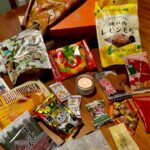Every nation will have its own interpretation of the concept of luck. Often, these ideas are advanced from folklore, eventually reaching modern consciousness, and becoming understood even if the underlying meaning is lost. Of course, when looking from the outside in, the concepts of luck can often veer into cliché and stereotypes. There is little to suggest that the Irish are fortunate, even if the saying “Luck O’ the Irish” has become universal. Yet, every nation has its own stories, and those stories will often provide us with symbolism and concepts for luck that are so much more interesting than the cold hard reality of probabilities and random chance. Japan is no different.
While Japan has its unique take on luck and superstition, it shares some similarities with neighboring countries. That, itself, is no accident, as folklore, superstition, and religious beliefs travel across borders. For example, there is a link between the Money Tree concept of Feng Shui that you will see in Asian-themed games like Habanero’s Lucky Lucky, and the Japanese version of Feng Shui, Fusui. They are similar but different. It’s all too easy for those in the West to confuse the ideas and the symbologies, missing the subtleties.
Lucky number 7
But let’s start with the easiest one – lucky numbers. Like many other countries, the number 7 is considered lucky. There are several reasons for this, none of which come from Western imports. For a start, there are the Shichifukuin, the Seven Gods of Luck from Japanese folklore. And the number 7 has resonance in Buddhism. You’ll often see the number seven appear in Pachinko game parlours, as well as scratchcard games. As for unlucky numbers, there is an issue with the number 8. The reason is simple: it sounds a lot like Shi, the word for death.
Perhaps the most famous Japanese manifestation of luck in Japan is with the Maenki Neko, AKA the waving or beckoning cat. The figurines are ubiquitous in modern Japan, although you’ll find them more often in tourist shops than on the mantlepieces of Japanese homes. The figurines are said to bring luck to the owners. The earliest record of Maenki Neko dates back to 1852 in Tokyo, so they aren’t as ancient as one might assume. However, the largely accepted (if not totally accurate) folktale that talks of the Maenki Neko is worth repeating. The story goes that a poor tavern owner (the type of shop changes depending on the source) fell on hard times, took in a stray cat and fed it despite having little himself. The cat, in return, sat outside the tavern, waving at customers, beckoning them into the tavern, thus bringing luck to the owner.
Turn your fortune
Omikuji – the fortune strips – are one of the most interesting aspects of Japanese luck and superstition. Strips of paper are picked out of box, with the idea being that they will predict some good event in your life. It could be anything from wealth to finding a spouse. However, Omikuji can also bequeath bad luck. Not to be thwarted by the fates, the Japanese will attach the bad-luck strip to a pine tree or wall of meta wires near the temple (Omikuji can be found at both Buddhist temples and Shinto shrines), which will have the effect of attaching the bad luck to the tree, and not the person.

Omikuji strips of paper tied to trees at a shrine in Osaka, Japan
All of us, regardless of where we are in the world, wish good luck and happiness for our children, and the Japanese do this by employing Koinobori, otherwise known as carp streamers, fish-shaped windsocks. This tradition is said to go all the way back to the days of the Samurai, who fly the emblems to celebrate a battle. However, today it is about the kids, with families flying Koinobori on National Children’s Day (celebrated in May).
A chocolate fortune
We mentioned earlier that Japan has its own rich history of folklore, it is not immune to Western influence, although it has its own spin on things. Consider the arrival of the KitKat chocolate bar, which was first sold in Japan in the 1970s. The name KitKat sounds similar to the Japanese phrase kitto katsu, loosely meaning “surely win” or “surely succeed”. The KitKat brand soon caught on as a lucky chocolate treat, and there was even a tradition of parents giving students a bar before they undertook exams.

There are so many other ways we can talk about the Japanese relationship with luck and good fortune, ranging from the Senbazuru paper cranes to the Ema plaques you will encounter at holy shrines. The country’s culture has so many amazing stories of where these ideas came from, and they form just one part of the rich diversity of Japanese myth and folklore.









